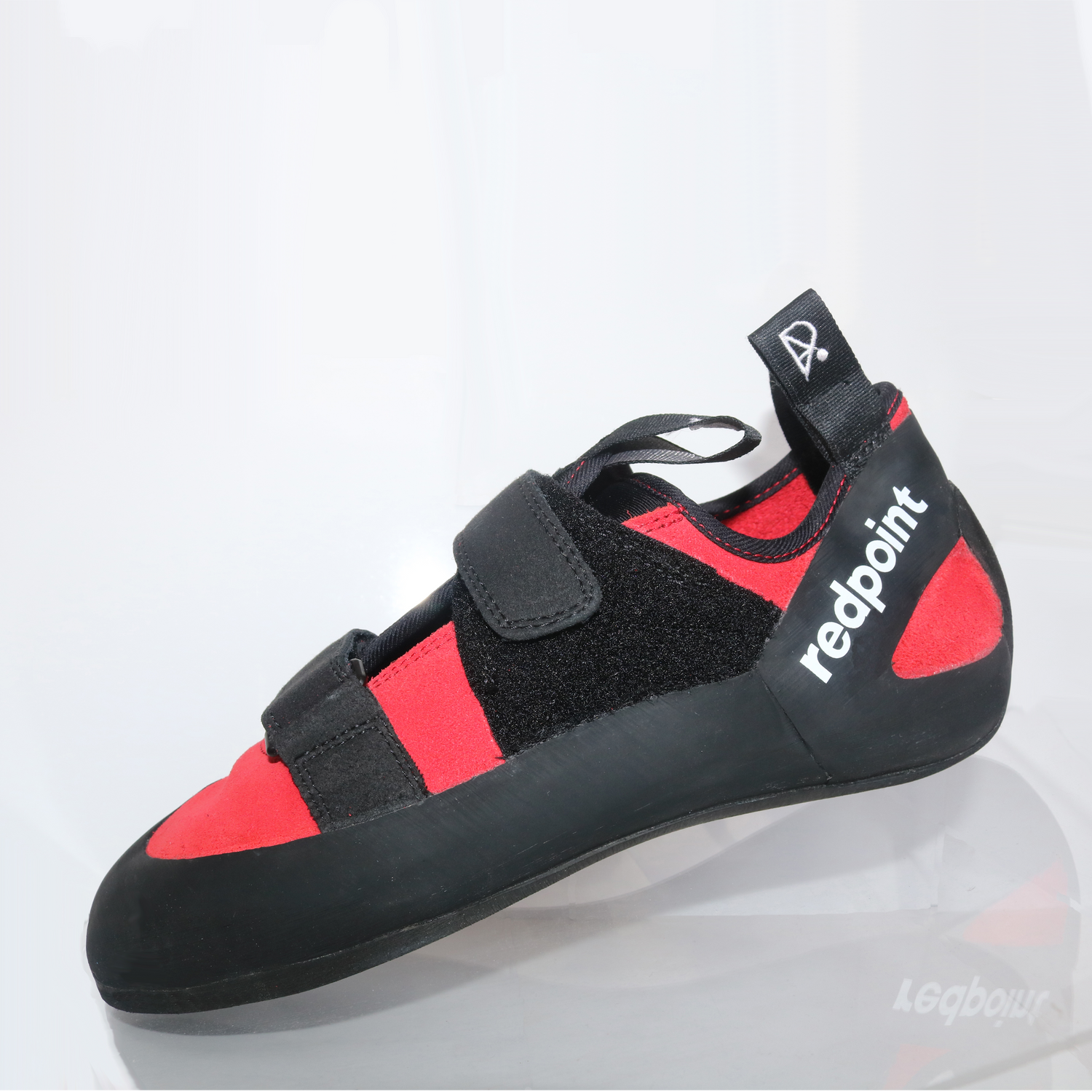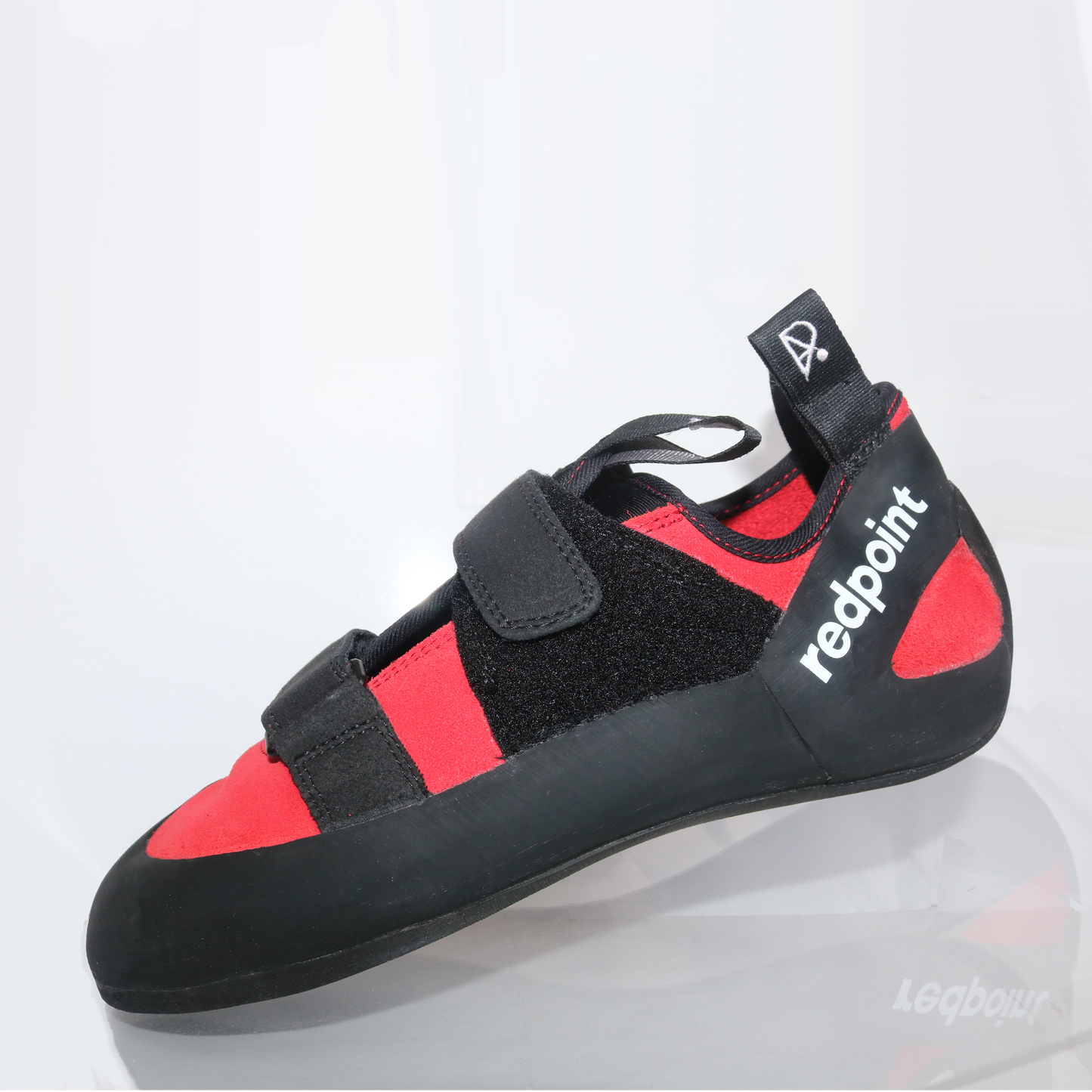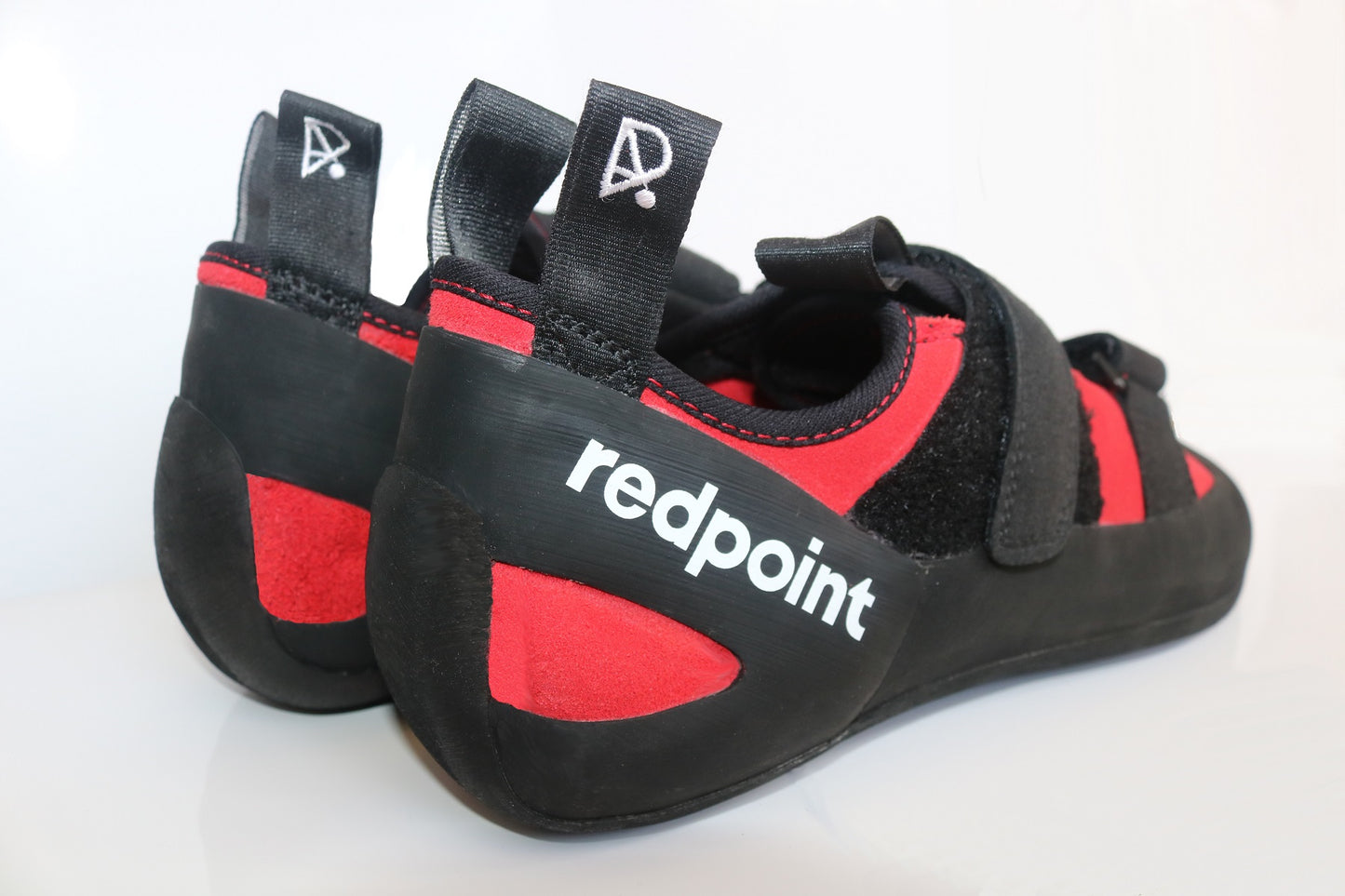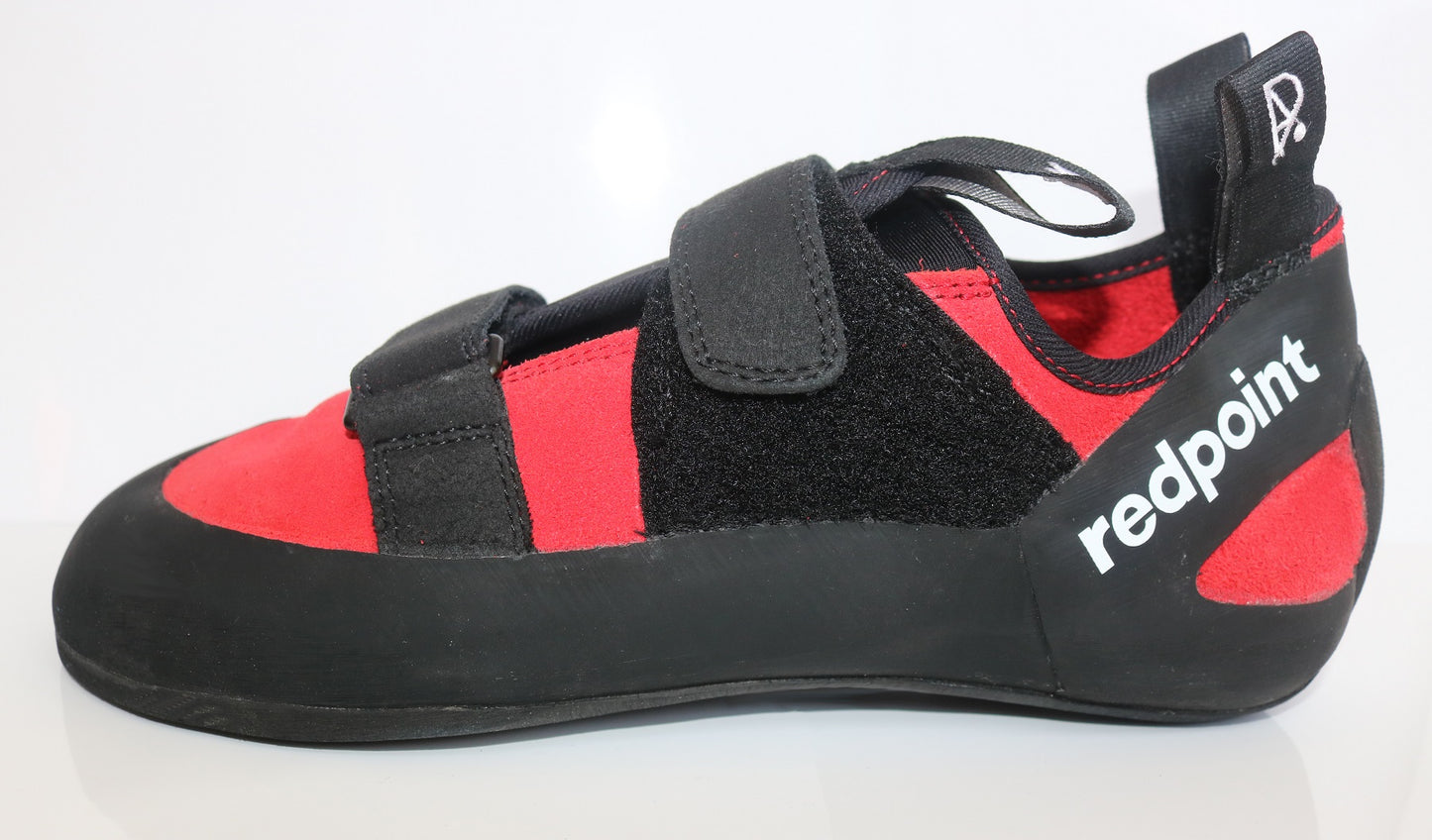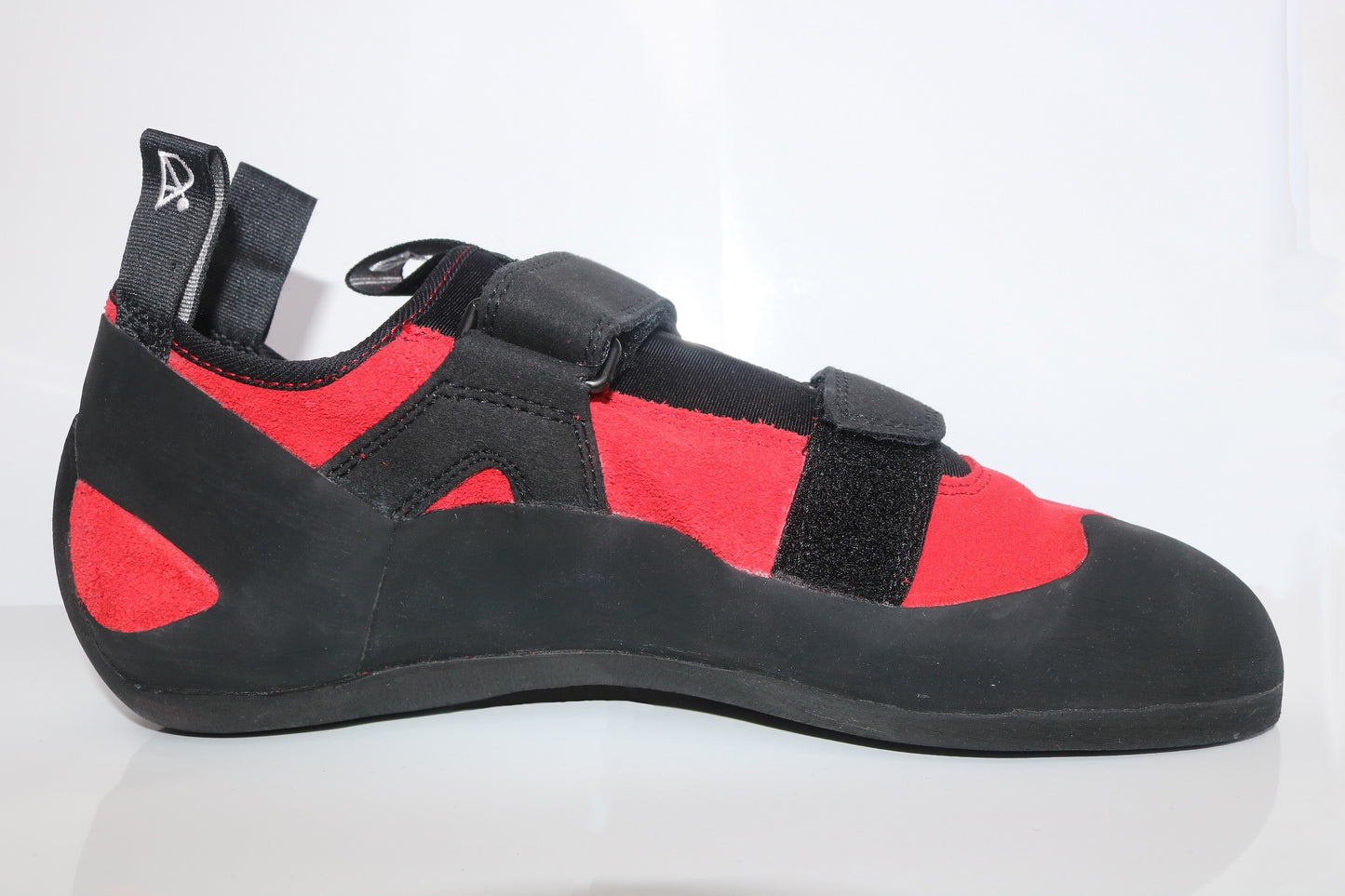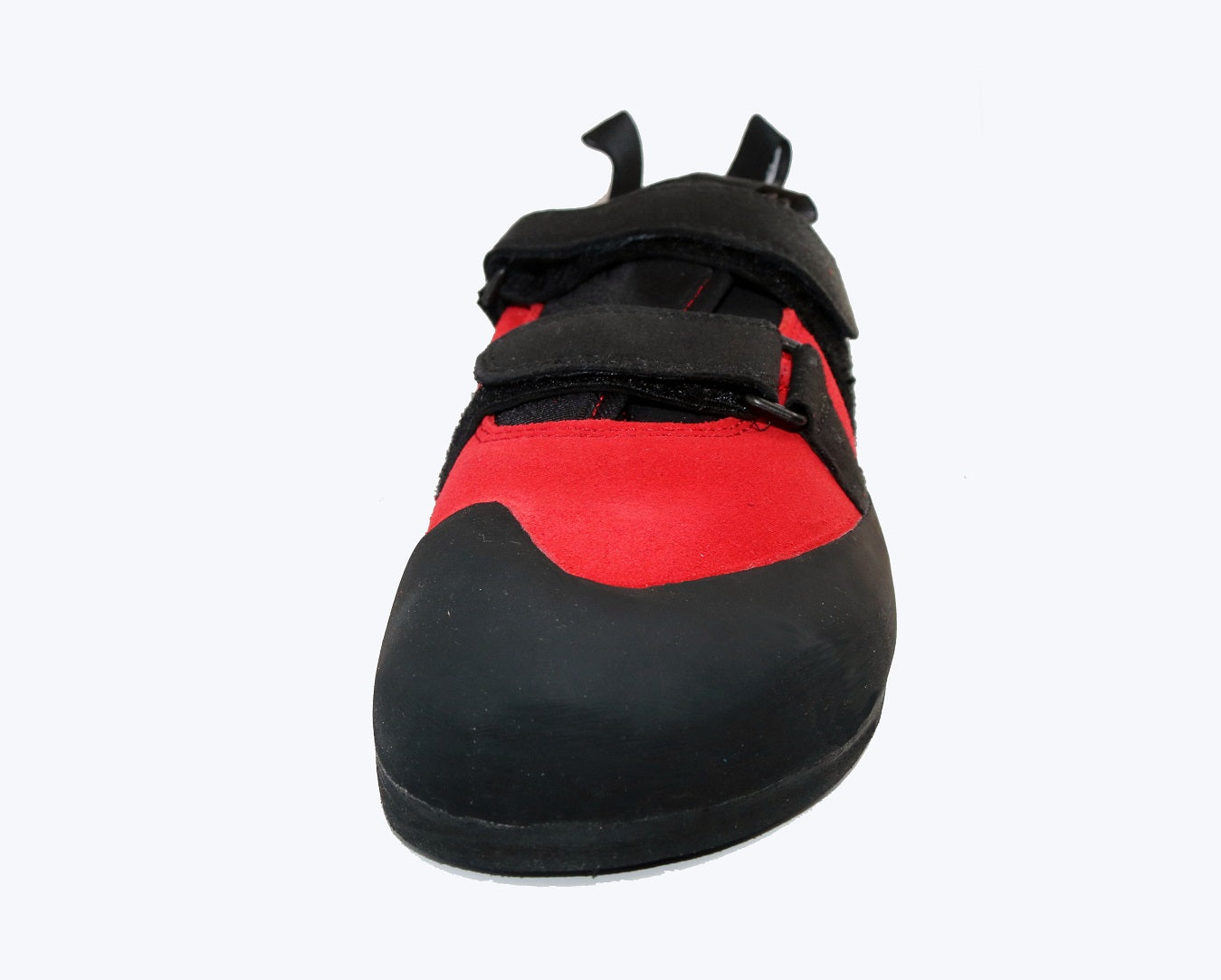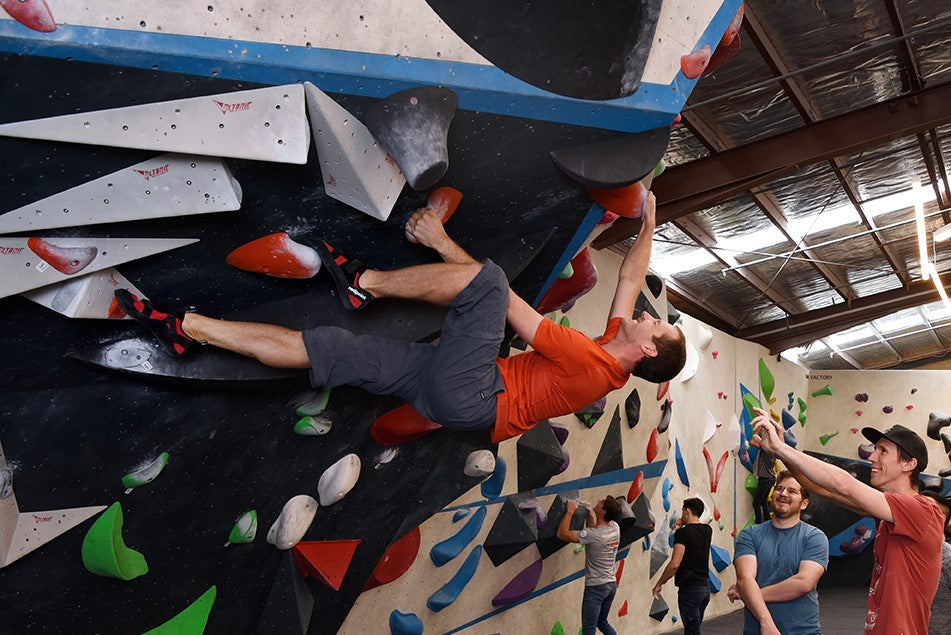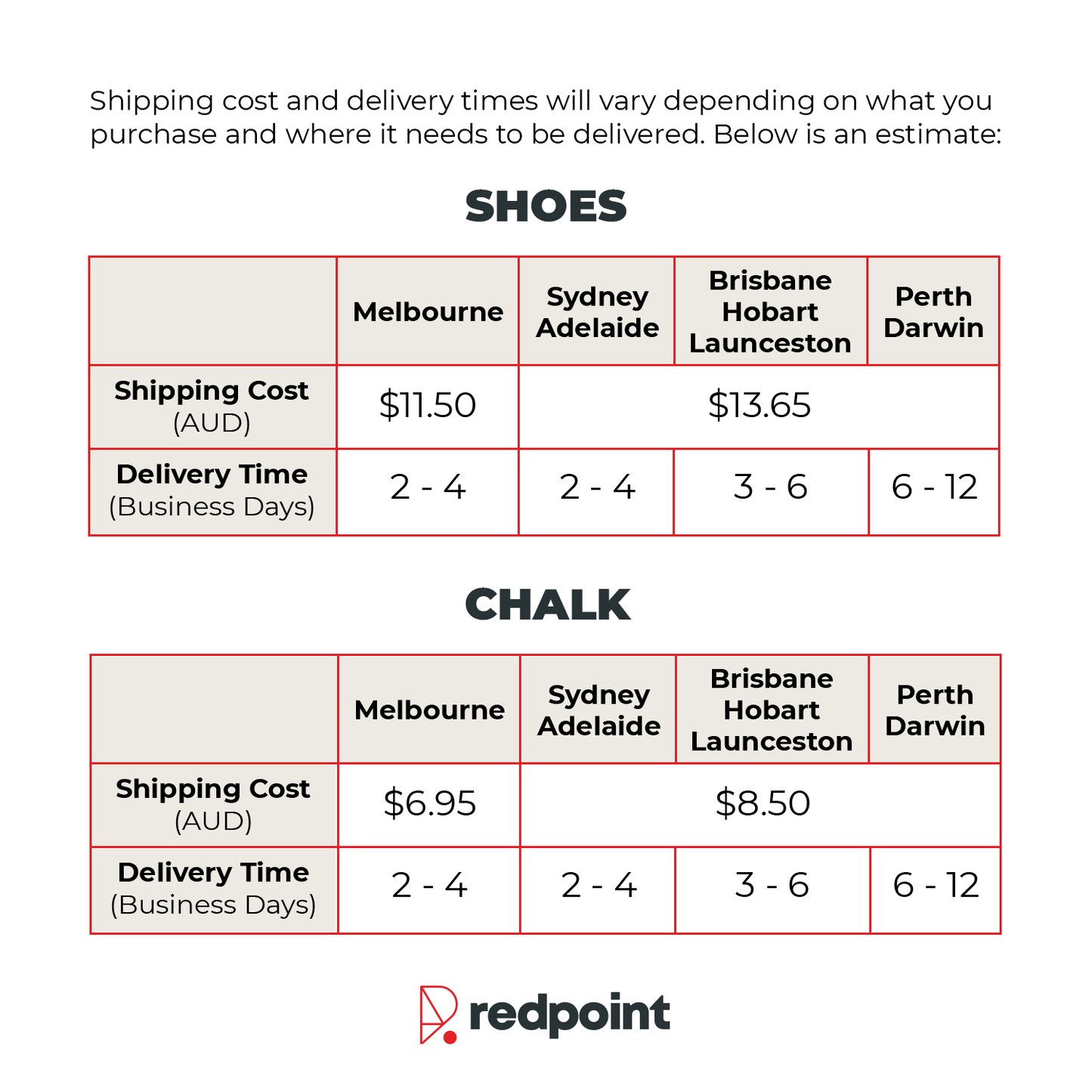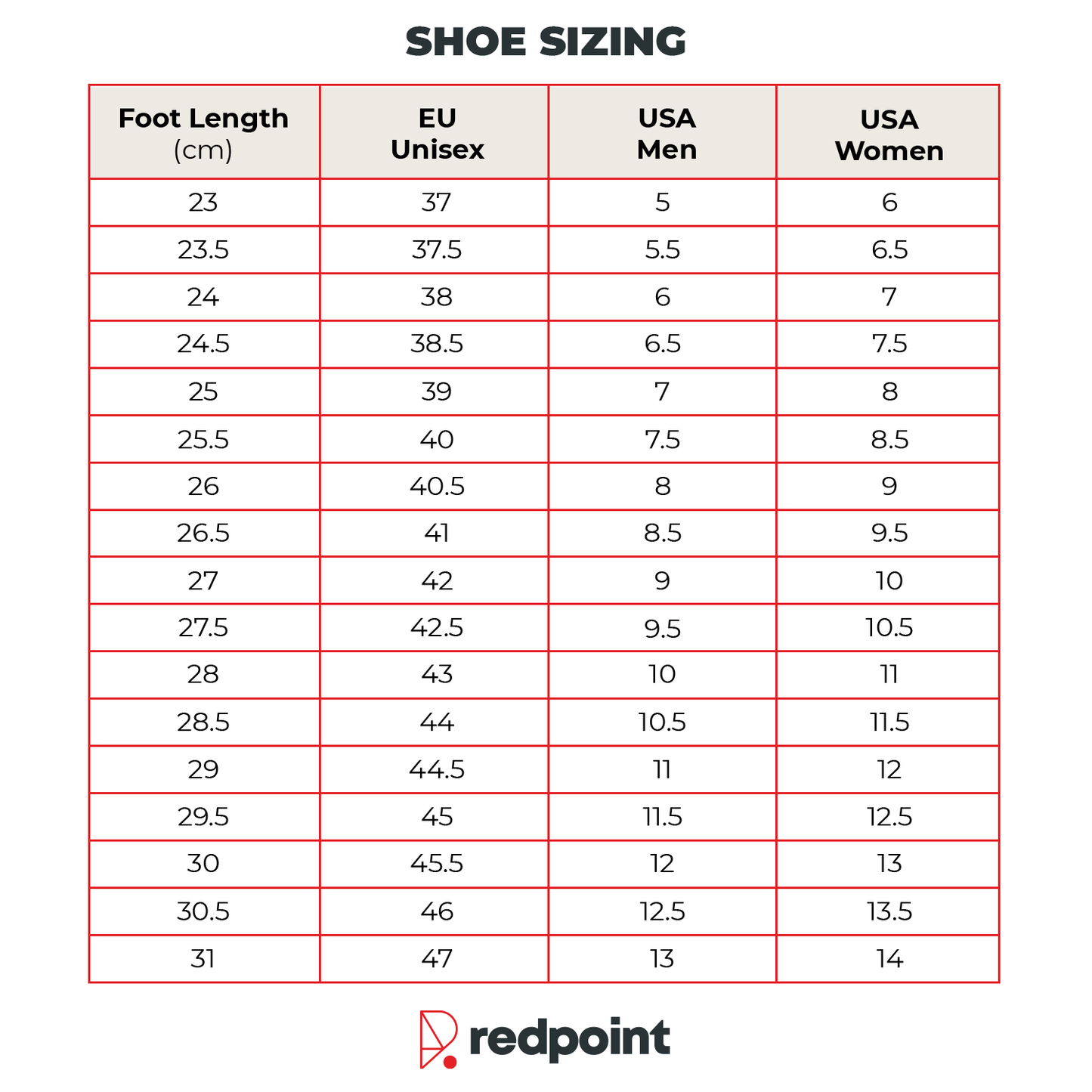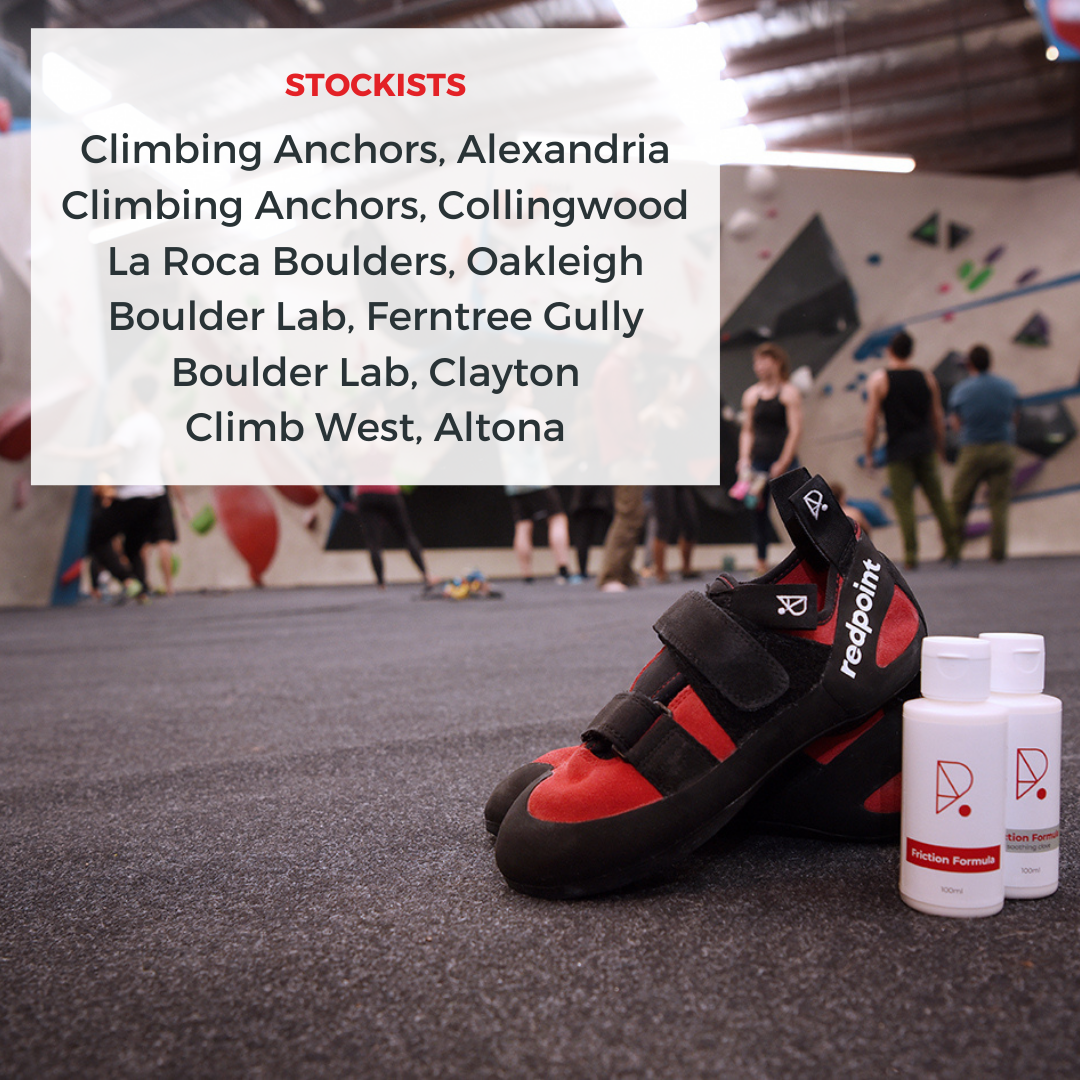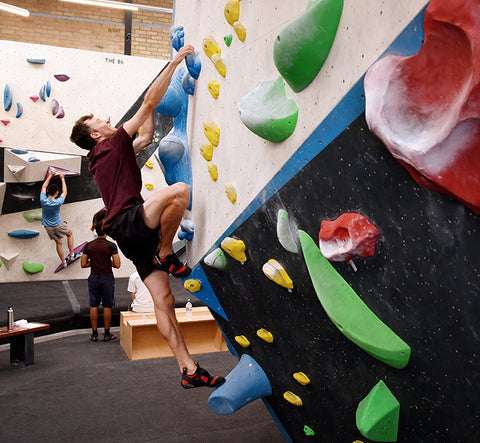
TLDR;
Trust your feet! If the climbing shoes are too tight and uncomfortable, you’ll get less enjoyment from climbing. Look for climbing shoes with a flat profile, 4mm rubber sole, leather upper and double velcro closure.
This guide is for climbers that:
- Have been climbing or bouldering for less than a year; or
- Boulder at around V3; or
- Top rope climb at around 17 Australian Ewbank grade
#1 The Profile: Go flat
Look for a climbing shoe with a neutral profile, which basically means the sole can sit flat on a surface rather than highly arched. Ignore anything that says ‘aggressive’ or ‘down-turned’. Flat profile shoes allow for a thicker rubber sole, which provides your feet with more support. You will need to build up your toe strength before moving on to more flexible shoes.
#2 The Outer Sole: Minimum 4mm
The outer sole is the rubber at the bottom of the climbing shoe. It will take the biggest beating from your climbing in your early days as you perfect your footwork. To avoid wearing your shoes out too quickly, you will want a sole with at least 4mm rubber to get the best value for your money.
#3 The Fit: Snug but not painfully tight
Uncomfortable shoes can really kill the joy of climbing and limit the time you spend on the wall. ‘Tight is right’ and ‘painful is good’ are some of the oldest myths around the climbing gym. Look for shoes that are snug - this means no gaps, especially near the toes and the heels. When trying on climbing shoes, try pulling the shoes off the heel. It shouldn’t slip. Next, walk around with the shoes on - don’t expect it to be as comfortable as a pair of sneakers but it also shouldn’t be painful. Climbers with wide feet, flat feet or bunions should look for shoes designed with a wide toe box, such as Redpoint Climbing's Ascend Climbing Shoes.
#4 Upper Material: Leather is most comfortable
The upper material of a climbing shoe is what covers most of your foot aside from the rubber sole. There are two main types of material - leather and synthetic. Leather is often a little more expensive but provides superior comfort by stretching and moulding around the foot better. It is also breathable, which means that your shoes won’t get as smelly. Synthetic shoes generally end up with an unmistakable stench within 3 months of wear.
#5 The Closure: Double velcro is most convenient
Climbing shoes are fastened by velcro, lace or sometimes a mix of the two. Lace generally provides the best fit as you can adjust the tightness of the upper versus lower foot. However, it is time consuming to put on and take off. This conundrum has been solved by having two velcro strips threaded in opposite directions, providing convenience but also the best fit.

